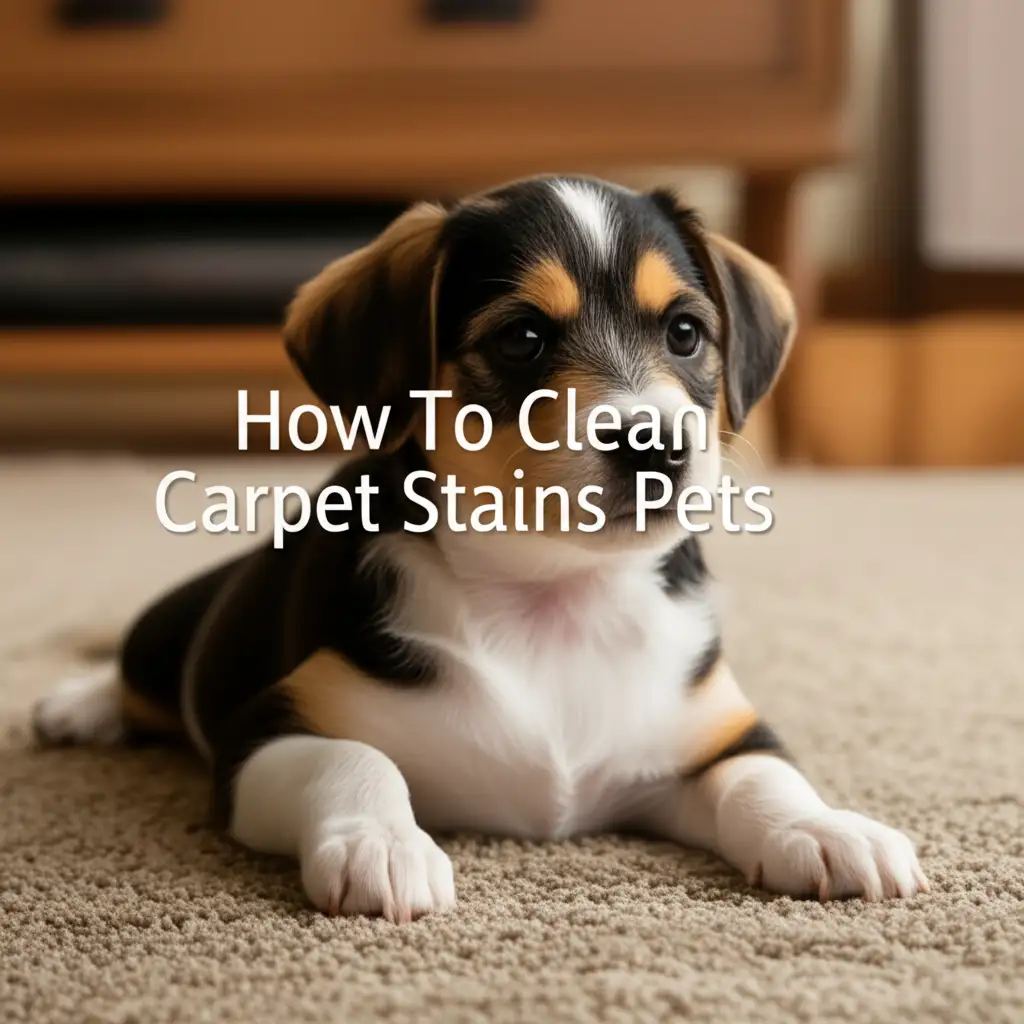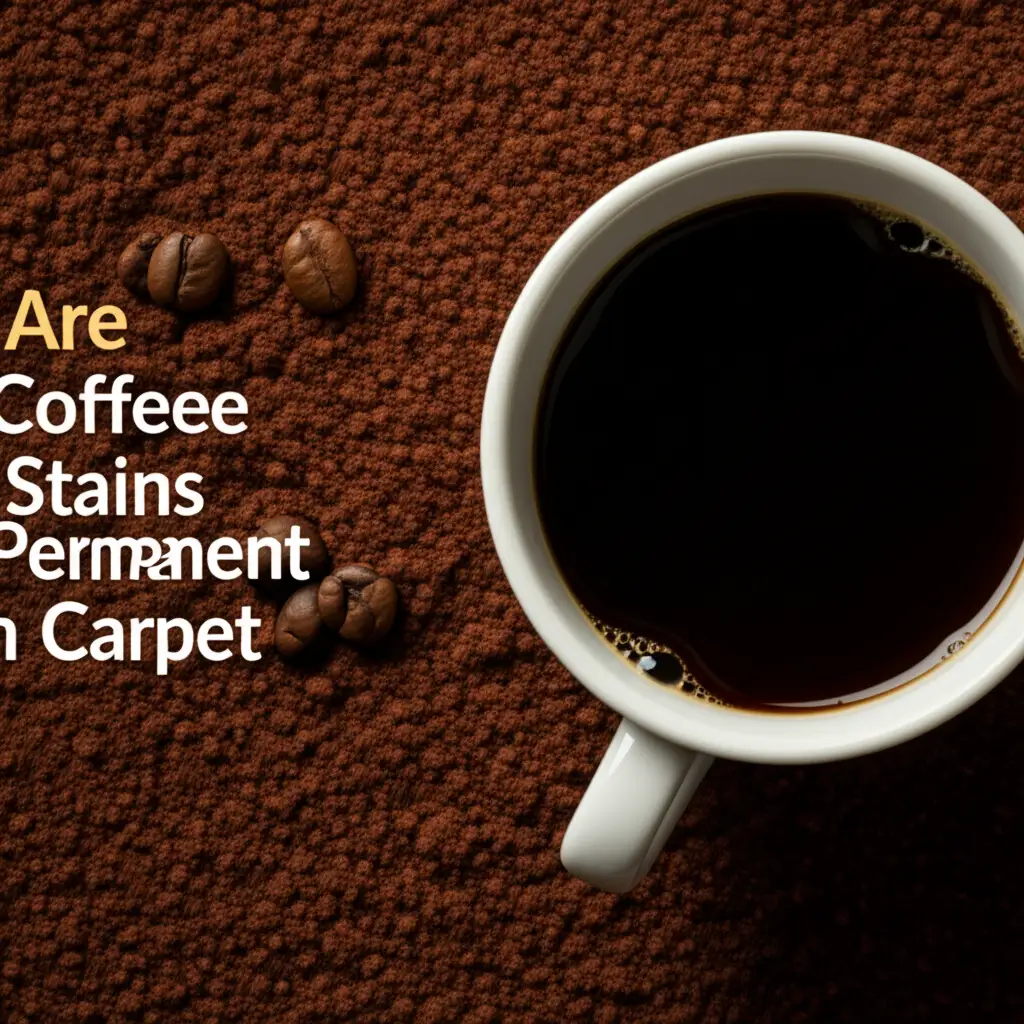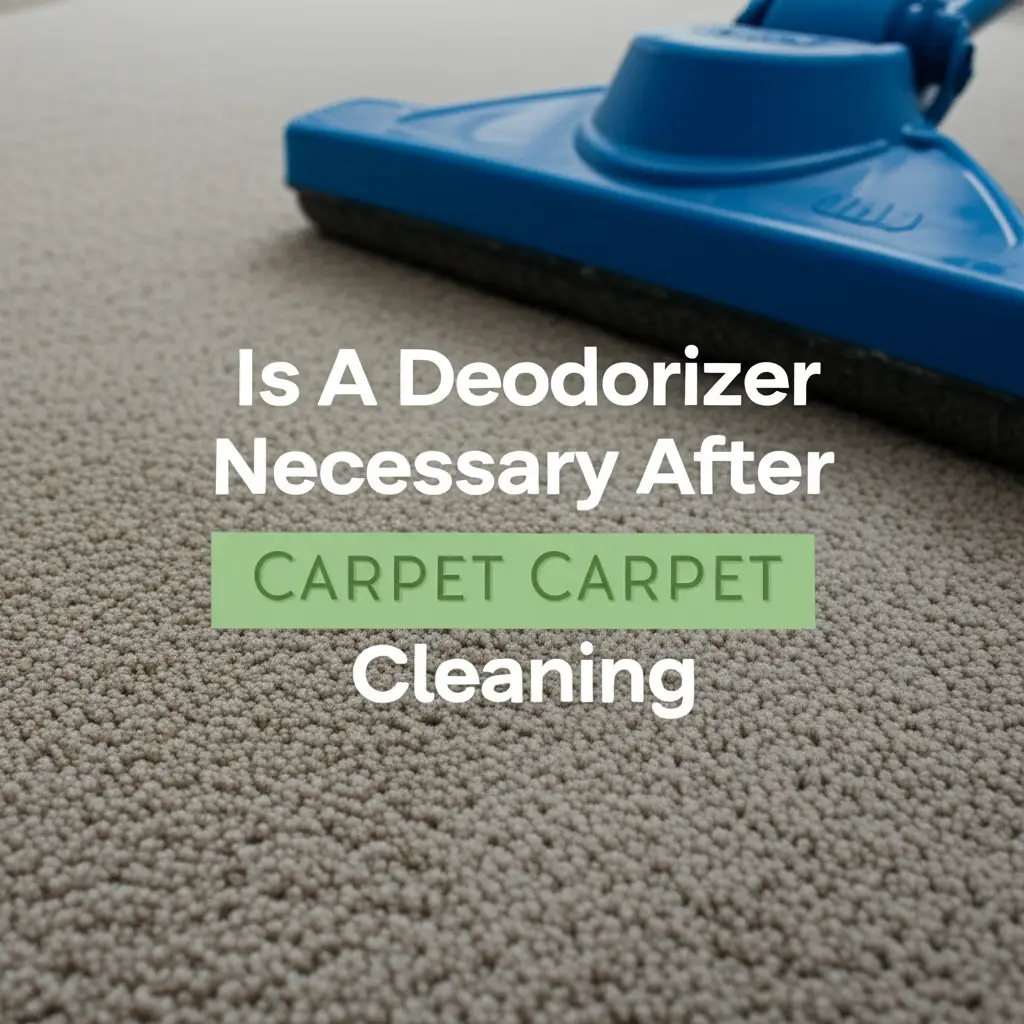· Elira Thomsen · Home Care · 13 min read
How To Clean Carpet Stains Pets

Mastering Pet Carpet Stain Removal
Pet accidents on your carpet are a common challenge for many pet owners. These stains are not just simple spills; they often carry strong odors and can become permanent if not handled correctly. Learning how to clean carpet stains from pets effectively saves your carpet and keeps your home smelling fresh. I understand the frustration of finding a new wet spot. This article will guide you through the best methods, from immediate action to tackling old, stubborn marks. We will cover essential tools, step-by-step cleaning guides, and strategies for odor removal and prevention.
Takeaway:
- Act quickly to blot fresh pet stains.
- Use enzyme-based cleaners to break down organic matter and eliminate odor sources.
- Blot, do not rub, to prevent spreading the stain and damaging carpet fibers.
- Address odors directly to stop pets from re-soiling the same area.
- Regular maintenance and proper technique protect your carpet long-term.
To effectively clean pet carpet stains, immediately blot excess liquid. Then, apply an enzyme-based cleaner, allowing it to work as directed. Blot the area dry. Always test any product in a hidden spot first. This process removes the stain and neutralizes pet odors, keeping your carpet clean and fresh.
Why Pet Stains Require Special Attention
Pet stains are different from other household spills. Urine, vomit, and feces contain organic matter that breaks down over time. This breakdown creates very strong, unpleasant odors. These odors also attract pets back to the same spot. This means your pet might re-soil the area repeatedly.
Standard carpet cleaners often mask pet odors temporarily. They do not remove the odor-causing molecules. This leaves behind a scent that pets can still detect. Ignoring these unique properties can lead to permanent damage and lingering smells. A different approach is necessary to truly clean pet carpet stains. We need to break down the organic compounds.
Pet urine, specifically, changes composition as it dries. Initially, it is acidic. As it dries, it becomes alkaline. This shift makes it harder to remove. It can also cause dye changes in your carpet. Immediate action is crucial to minimize permanent damage. Understanding these facts helps us choose the right cleaning methods.
Immediate Action: The First 60 Seconds for Fresh Pet Stains
When you spot a fresh pet stain, speed is your best friend. The quicker you act, the easier the stain will be to remove. Fresh stains have not yet had time to set into the carpet fibers. They have not started to break down chemically. This makes them much more responsive to cleaning.
My first step is always to grab absorbent materials. You want to soak up as much liquid as possible. Do not rub the stain. Rubbing pushes the liquid deeper into the carpet and spreads the mess. This also damages the carpet fibers. Instead, blot gently from the outside of the stain inwards.
Use a clean white cloth, paper towels, or an old towel. Place the material over the stain and apply firm pressure. You can even stand on it for a few seconds. Repeat this blotting process with fresh, clean sections of your absorbent material. Continue until no more liquid transfers to the cloth. This step alone can remove a significant portion of the stain and odor.
Essential Tools and Supplies for Pet Stain Cleaning
Having the right tools ready makes pet stain cleanup much easier. You do not want to be searching for supplies while a fresh stain sets in. Building a small cleaning kit specifically for pet accidents is a smart idea. This kit should include items that address both the stain and the odor.
First, you need absorbent materials. This includes plenty of clean white towels or paper towels. White towels ensure no dye transfers to your carpet. Next, an enzyme-based cleaner is a must-have for pet stains. These cleaners contain enzymes that break down the organic proteins in pet waste. This process eliminates odors at their source. Look for products specifically labeled for pet stains and odors.
You will also need a spray bottle for applying cleaners evenly. A soft brush or old toothbrush can help work cleaner into stubborn spots. Finally, consider a wet/dry vacuum or a small carpet cleaning machine. These machines can extract the cleaner and the stain more effectively than blotting alone. Having these items on hand prepares you for any pet mess.
- Absorbent Towels: Use white or colorfast towels to blot liquids.
- Enzyme Cleaner: This is key for breaking down organic matter and removing odors. Choose a formula designed for pet stains.
- Spray Bottle: For even application of cleaning solutions.
- Soft Brush: Helps work the cleaner into carpet fibers.
- Wet/Dry Vacuum or Carpet Cleaner: For extraction and thorough rinsing.
- Rubber Gloves: Protect your hands from cleaners and waste.
- Plastic Bags: For disposing of soiled materials.
Step-by-Step Guide to Cleaning Fresh Pet Stains
Cleaning a fresh pet stain correctly prevents it from becoming a long-term problem. I follow a simple, effective sequence every time. This approach ensures thorough stain and odor removal. We want to remove all traces of the accident.
First, handle the solid waste. If your pet has had a bowel movement, use a paper towel or a disposable cloth to pick up the solids. Be careful not to spread them. Dispose of this waste immediately in a sealed bag. Then, move to the liquid part of the stain.
Blot the wet area using clean, absorbent towels or paper towels. Press down firmly to soak up as much liquid as possible. Keep changing to a clean part of the towel until no more moisture transfers. This step is crucial for minimizing the stain. Remember, do not rub the stain.
Once the area is as dry as possible from blotting, apply your chosen enzyme cleaner. Spray or pour the cleaner directly onto the stain. Make sure the cleaner saturates the carpet fibers completely. Follow the product instructions for dwell time. This is usually 10-15 minutes. The enzymes need time to break down the organic material. After the dwell time, blot the area again with clean towels. Continue blotting until the area is dry. For best results, place a clean, dry towel over the treated spot and weigh it down with a heavy object overnight. This helps draw out any remaining moisture and cleaner.
Tackling Old or Stubborn Pet Stains
Old pet stains present a greater challenge than fresh ones. They have had time to set deep into the carpet fibers. The organic matter might have dried and crystalized. This makes both the stain and the odor harder to remove. Do not despair; even old stains can often be improved or completely removed with persistence.
The key to old stains is rehydration and repeated enzyme treatment. Start by re-wetting the old stain with warm water. Use a spray bottle to dampen the area. Do not over-saturate. This helps reactivate the dried organic compounds. Blot the area gently to remove any loosened residue.
Next, apply a generous amount of enzyme cleaner. For old stains, I often let the cleaner sit for a longer period than fresh ones. Sometimes, I let it sit for several hours, or even overnight, covered with plastic wrap to keep it moist. Always check the cleaner’s instructions for maximum dwell time. The longer contact time gives the enzymes more opportunity to break down the stubborn compounds. You may need to repeat the enzyme application process several times for very old or deeply set stains.
After the extended dwell time, blot the area thoroughly with clean towels. Apply pressure to extract as much cleaner and dissolved stain as possible. You might notice the stain fading with each treatment. A wet/dry vacuum can be highly effective here. It pulls out the dissolved material and cleaner, which hand blotting cannot fully achieve. Persistence is key with old pet stains.
Odor Removal: Getting Rid of Lingering Smells
Removing the visible stain is only half the battle with pet accidents. The lingering odor is often more problematic. Pet odors result from bacteria breaking down urine and other organic matter. If these odor-causing molecules remain, the smell will persist. Worse, the scent attracts your pet back to the same spot.
Enzyme cleaners are your primary weapon against odors. They do not just mask smells; they destroy the source. The enzymes break down the uric acid and other organic compounds into harmless gases. This process truly eliminates the odor. Always use enough enzyme cleaner to saturate the pad underneath the carpet if possible. Odor often soaks deeper than the visible stain.
After cleaning with an enzyme cleaner, ensure the area dries completely. Moisture can encourage mold or mildew, which adds new odors. Use fans or open windows to speed drying. For persistent odors, consider using baking soda as an additional step. Sprinkle a generous amount of baking soda over the dry, treated area. Let it sit for several hours, or even overnight. Baking soda is a natural odor absorber.
Vacuum the baking soda thoroughly. You might need to repeat the enzyme cleaning and baking soda process several times for very strong, deeply embedded odors. Identifying the exact source of the odor is also important. Sometimes, the smell is not just on the carpet surface but in the carpet pad or even the subfloor. Addressing these deeper sources might require professional help.
Specialized Pet Stain Removal Techniques
Beyond the standard enzyme cleaner approach, some specific situations require unique methods. These techniques can help when you face certain types of pet messes or need an extra boost. Understanding these options gives you more tools in your pet stain removal arsenal. I find these useful for specific challenges.
For example, vomit stains often contain stomach acids and sometimes bile. These can cause discoloration if not treated quickly. After removing the solids and blotting, a mixture of warm water and a small amount of dish soap can help. Apply it, let it sit for a few minutes, then blot. Follow with an enzyme cleaner to address any remaining organic material and odor. Rinse thoroughly with clean water, then blot dry.
For solid waste stains that leave a dark residue, like feces, scraping is important first. Use a dull knife or spoon to remove as much solid material as possible. Then, proceed with blotting and enzyme cleaning. You might need to repeat the enzyme treatment if a shadow remains. Sometimes, a mixture of white vinegar and water can help lighten remaining discoloration before the final enzyme treatment. Always rinse well after using vinegar.
For very light-colored carpets, be cautious with any colored cleaners or towels. Always test in an inconspicuous area first. Some pet owners find success with specialized pet stain removal tools like carpet spot cleaners that spray and extract. These small machines can be a great investment for frequent accidents. They often come with specialized pet cleaning solutions.
Preventing Future Pet Carpet Stains
The best way to deal with pet stains is to prevent them from happening. While accidents are sometimes unavoidable, especially with puppies or older pets, you can take steps to reduce their frequency. I always prioritize prevention alongside effective cleaning. This saves a lot of hassle.
One key prevention strategy is consistent house training. Establish a regular bathroom schedule for your pet. Take them outside frequently, especially after waking up, eating, and playing. Reward them generously when they eliminate outdoors. This reinforces good habits. Crate training can also be very effective for housebreaking puppies. They are unlikely to soil their sleeping area.
Identify and thoroughly clean any existing “accident zones.” If your pet keeps returning to the same spot, it means the odor is still present, even if you cannot smell it. Use an enzyme cleaner meticulously to eliminate all traces of odor. Consider using a UV blacklight to find hidden urine spots. These lights make dried urine glow, revealing areas that need treatment.
You can also use physical barriers or deterrents. Pet gates can restrict access to carpeted areas when you cannot supervise your pet. Training pads can be an option for very young puppies or elderly pets who cannot hold it as long. For areas where accidents frequently occur, consider placing washable rugs or mats. These are much easier to clean or replace than your entire carpet. Consistency, thorough cleaning, and management are key to preventing pet stains.
FAQ Section
Q: What is the best cleaner for pet urine on carpet? A: The best cleaner for pet urine on carpet is an enzyme-based cleaner. These products contain specialized enzymes that break down the uric acid crystals and other organic components found in urine. This action eliminates the odor at its source, rather than just masking it, which also deters your pet from re-soiling the same area.
Q: How do you remove old pet urine stains from carpet? A: To remove old pet urine stains, you need to rehydrate the dried urine. Dampen the stain with warm water, then apply a generous amount of enzyme cleaner. Allow the cleaner to sit for an extended period, often several hours or overnight, as per product instructions. Blot thoroughly, and repeat the process if needed for complete removal.
Q: Does baking soda remove pet odors from carpet? A: Baking soda can help absorb lingering pet odors from carpet, especially after an enzyme cleaner has been used. Sprinkle a generous layer over the dry, treated area and let it sit for several hours or overnight. Then, vacuum it up. While effective as an absorbent, baking soda alone does not break down the odor-causing compounds like enzyme cleaners do.
Q: When should I call a professional for pet stains? A: You should consider calling a professional carpet cleaner for pet stains if the stains are very large, deeply embedded, or if the odor persists despite multiple cleaning attempts. Professionals have stronger equipment, specialized cleaning solutions, and knowledge to address stains that have saturated the carpet pad or subfloor, preventing permanent damage.
Q: How can I stop my pet from re-soiling the same spot? A: To stop your pet from re-soiling the same spot, you must completely eliminate the residual odor. Thoroughly clean the area with an enzyme-based cleaner to break down all odor-causing molecules. Additionally, use a pet deterrent spray or place a piece of furniture over the spot temporarily. Consistent house training and supervision also help reinforce good habits.
Conclusion
Cleaning carpet stains from pets does not have to be a daunting task. By understanding the unique nature of pet messes and applying the right techniques, you can keep your home fresh and your carpets looking their best. We covered the importance of quick action, the power of enzyme cleaners, and step-by-step methods for both fresh and old stains. Remember, addressing the odor is just as important as removing the visible mark. This prevents your beloved pet from returning to the same spot repeatedly.
I hope these methods empower you to tackle any pet accident with confidence. Maintaining a clean home is achievable, even with furry friends around. Consistent effort and the right tools make all the difference. For more helpful tips on maintaining a beautiful and cozy home, explore our other articles. You can create a comfortable living space for everyone in your family, including your pets.





